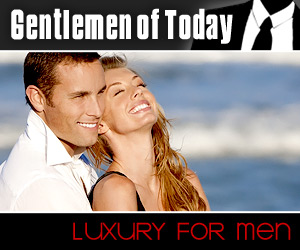
Movies Home / Entertainment Channel / Bullz-Eye Home
In terms of sheer celluloid footage, Paris may fall somewhat behind the American film capitals of Los Angeles and New York. In terms of sheer emotional impact, however, Paris is sans pareil. Why? It's a civic symbol of romance, sex, great food, intellectual profundity and everything else that makes life worth living. It also happens to be the home of arguably the second or third most influential industry in the history of cinema.
Paris is not just a city; it's a symbol. In "Casablanca," the French capital stands in not only for lost love, but the freedom of thought and feeling that was anathema to its wartime Nazi occupiers. No wonder, then, that Paris has been the setting for countless musicals, romantic melodramas, thrillers, romantic comedies, art-house think-pieces, tales of intense erotic love (but of course!) and even the occasional all-out action flick (like the new release "From Paris With Love.") Come with us now as we explore 15 cinematic celebrations of the City of Light, the city many consider the most cinematic on Earth. Everything changes, but movie lovers will always have Paris.
 "Children of Paradise" (1945)
"Children of Paradise" (1945)
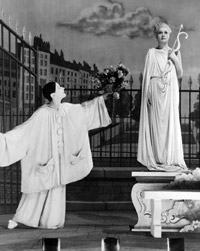 It was actually filmed near Nice, and you won't see the Eiffel Tower or the Arche de Triomphe anywhere, but there is no film more Parisian than this epic-length tale of the effect one beauteous prostitute-turned-actress (Arletty) has on four very different men: a lovelorn mime (Jean-Louis Barrault), a womanizing actor (Pierre Brasseur), a self-involved nobleman (Louis Salou), and a deliciously evil master criminal (Marcel Herrand). Famously made under partially clandestine circumstances during the Nazi occupation, director Marcel Carne and writer Jacques Prévert's romantic melodrama is arguably the most beloved French film of all time, and a poetic love letter to the world of the arts and to love itself. It's recreation of the 19th century Parisian theater district located on the street nicknamed Le Boulevard du Crime is detailed, beautiful and itself a crime under Vichy France law, since production designer Alexandre Trauner was a Jew. Indeed, aside from its inarguable cinematic and literary intelligence, "Children of Paradise" is proof of the indomitable spirit of the city. It might have taken the allied troops to liberate Paris physically, but Carne and Prevert's masterpiece showed that the spirit of Free France could not be easily destroyed.
It was actually filmed near Nice, and you won't see the Eiffel Tower or the Arche de Triomphe anywhere, but there is no film more Parisian than this epic-length tale of the effect one beauteous prostitute-turned-actress (Arletty) has on four very different men: a lovelorn mime (Jean-Louis Barrault), a womanizing actor (Pierre Brasseur), a self-involved nobleman (Louis Salou), and a deliciously evil master criminal (Marcel Herrand). Famously made under partially clandestine circumstances during the Nazi occupation, director Marcel Carne and writer Jacques Prévert's romantic melodrama is arguably the most beloved French film of all time, and a poetic love letter to the world of the arts and to love itself. It's recreation of the 19th century Parisian theater district located on the street nicknamed Le Boulevard du Crime is detailed, beautiful and itself a crime under Vichy France law, since production designer Alexandre Trauner was a Jew. Indeed, aside from its inarguable cinematic and literary intelligence, "Children of Paradise" is proof of the indomitable spirit of the city. It might have taken the allied troops to liberate Paris physically, but Carne and Prevert's masterpiece showed that the spirit of Free France could not be easily destroyed.
 "An American in Paris" (1951)
"An American in Paris" (1951)
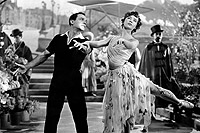 It's a long way from post-war Paris, France, to Culver City, California, circa 1950, and we don't just mean in terms of mileage. However, this opulent, multi-Oscar winning musical romance shot entirely on the old MGM backlot is probably the most dazzlingly iconic cinematic portrayal of the city of Paris ever – not despite its artificiality, but because of it. It stars actor/choreographer Gene Kelly as an ex-G.I. artist under the heel of an attractive patron (Nina Foch), but in love with an unspoiled young local (19-year-old French ex-ballerina Leslie Caron in her first movie role). The story is boilerplate but beside the point. This showpiece -- from directing great Vincente Minelli, with music by George and Ira Gershwin -- it is a salute to a bohemian Paris that never existed outside the imagination. It all culminates in the film's climactic ballet, where we move from the normal backlot Paris to a second fantasy Paris complete with fully stylized backgrounds incorporating the work of such Parisian painters as Toulouse Lautrec. "An American in Paris" isn't everyone's favorite MGM musical, but there's no denying that it's still the ultimate American fantasy of life in the City of Light.
It's a long way from post-war Paris, France, to Culver City, California, circa 1950, and we don't just mean in terms of mileage. However, this opulent, multi-Oscar winning musical romance shot entirely on the old MGM backlot is probably the most dazzlingly iconic cinematic portrayal of the city of Paris ever – not despite its artificiality, but because of it. It stars actor/choreographer Gene Kelly as an ex-G.I. artist under the heel of an attractive patron (Nina Foch), but in love with an unspoiled young local (19-year-old French ex-ballerina Leslie Caron in her first movie role). The story is boilerplate but beside the point. This showpiece -- from directing great Vincente Minelli, with music by George and Ira Gershwin -- it is a salute to a bohemian Paris that never existed outside the imagination. It all culminates in the film's climactic ballet, where we move from the normal backlot Paris to a second fantasy Paris complete with fully stylized backgrounds incorporating the work of such Parisian painters as Toulouse Lautrec. "An American in Paris" isn't everyone's favorite MGM musical, but there's no denying that it's still the ultimate American fantasy of life in the City of Light.
 "Funny Face" (1957)
"Funny Face" (1957)
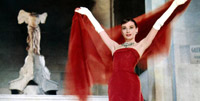 This glossy musical-comedy vehicle featuring another well-known ex-ballerina, Audrey Hepburn, and the world's greatest hoofer, Fred Astaire, from director Stanley Donen ("Seven Brides for Seven Brothers") is really more about the love Americans feel for the city of Paris than the love its protagonists have for each other. "Bonjour Paris!" has Astaire's as a world-famed photographer, Kay Thompson as an ultra-sophisticated fashion magazine editor, and Hepburn as a young intellectual, all shamefacedly sneaking off for the unfashionable act of being tourists. It's a perfect excuse to take movie audiences on a split-screen tour of real Parisian locations – all shot in glorious high resolution/big screen VistaVision and Technicolor. But that's hardly all. The film simultaneously spoofs and celebrates the city's intellectual and bohemian side, as Hepburn engages in a send-up of modern dance in a coffee house, while another sequence brings us Astaire and Thompson masquerading as wacky Southern American minstrels cutting it up at a philosopher's salon. It's typical of the American attitude towards French intellectuals. We don't know whether to admire them or be intimidated by them, so we poke fun at them instead. It might not be the deepest approach, but it's never been done with more joy or style.
This glossy musical-comedy vehicle featuring another well-known ex-ballerina, Audrey Hepburn, and the world's greatest hoofer, Fred Astaire, from director Stanley Donen ("Seven Brides for Seven Brothers") is really more about the love Americans feel for the city of Paris than the love its protagonists have for each other. "Bonjour Paris!" has Astaire's as a world-famed photographer, Kay Thompson as an ultra-sophisticated fashion magazine editor, and Hepburn as a young intellectual, all shamefacedly sneaking off for the unfashionable act of being tourists. It's a perfect excuse to take movie audiences on a split-screen tour of real Parisian locations – all shot in glorious high resolution/big screen VistaVision and Technicolor. But that's hardly all. The film simultaneously spoofs and celebrates the city's intellectual and bohemian side, as Hepburn engages in a send-up of modern dance in a coffee house, while another sequence brings us Astaire and Thompson masquerading as wacky Southern American minstrels cutting it up at a philosopher's salon. It's typical of the American attitude towards French intellectuals. We don't know whether to admire them or be intimidated by them, so we poke fun at them instead. It might not be the deepest approach, but it's never been done with more joy or style.
 "Love in the Afternoon" (1957)
"Love in the Afternoon" (1957)
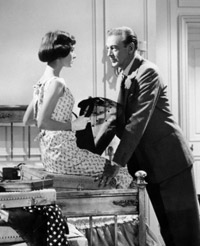 The idea of Paris as the world's most sex-crazed urban center gets a workout in Billy Wilder's flawed but daring and very funny sex comedy. "Love" brings us Audrey Hepburn, fresh off "Funny Face," as an innocent young cellist besotted with a much older industrialist (Gary Cooper) blessed with a Tiger Woods-like appetite. While the movie boasts some very nice black and white location footage, Wilder's Paris is primarily one of interiors where farcical seductions of various types are the prevalent activity. As usual, Wilder has fun turning American preconceptions on their head and casts Middle America's ultimate stereotype of the rakish Parisian, Maurice Chevalier, as Hepburn's slightly stodgy private detective father. The film's first three words: "This is the city" makes it clear he's the Parisian Joe Friday, the crimes of love are his beat and, this being Paris, he's always busy. "Love in the Afternoon" was not a hit, partially because of an overly huge and obvious age difference between the elfin Hepburn and the grizzled Cooper. Still, Wilder's portrayal of Paris as a sexual sin city did no harm for Parisian tourism.
The idea of Paris as the world's most sex-crazed urban center gets a workout in Billy Wilder's flawed but daring and very funny sex comedy. "Love" brings us Audrey Hepburn, fresh off "Funny Face," as an innocent young cellist besotted with a much older industrialist (Gary Cooper) blessed with a Tiger Woods-like appetite. While the movie boasts some very nice black and white location footage, Wilder's Paris is primarily one of interiors where farcical seductions of various types are the prevalent activity. As usual, Wilder has fun turning American preconceptions on their head and casts Middle America's ultimate stereotype of the rakish Parisian, Maurice Chevalier, as Hepburn's slightly stodgy private detective father. The film's first three words: "This is the city" makes it clear he's the Parisian Joe Friday, the crimes of love are his beat and, this being Paris, he's always busy. "Love in the Afternoon" was not a hit, partially because of an overly huge and obvious age difference between the elfin Hepburn and the grizzled Cooper. Still, Wilder's portrayal of Paris as a sexual sin city did no harm for Parisian tourism.
 "Gigi" (1958)
"Gigi" (1958)
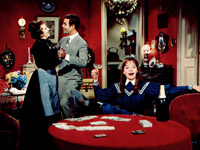 Your grandmother's favorite movie is, when you look at it, a little bit filthy. Vincente Minelli's second whack at a Paris-based musical fantasy is so cheerfully candy-colored, however, that you might not notice it's about a teenager being trained for a life of high-end prostitution. Made in collaboration with Broadway's Alan Jay Lerner and Frederick Lowe ("My Fair Lady"), and based on a novel by Colette, this Oscar-winning hit re-teamed Minelli with Leslie Caron (massive overbite gone thanks to U.S. orthodontia), but still playing very young women seven years after "An American in Paris." In this case, Caron is an innocent but strong-willed early 20th century teen whose shot at avoiding life as a Parisian courtesan comes through her friendship with a bored member of the idle rich (Louis Jourdan). Once again, the audience is conditioned to accept that there's something about that beautifully realized turn-of-the-century Bois de Bologne which makes people into period playas and hos. (Not that there's anything wrong with that.) Along for the ride is that ultimate Hollywood Parisian, Maurice Chevalier, in a more comfortable role as a cheerful, elderly womanizer who opens the film with its best known song, "Thank Heaven for Little Girls." Okay, then.
Your grandmother's favorite movie is, when you look at it, a little bit filthy. Vincente Minelli's second whack at a Paris-based musical fantasy is so cheerfully candy-colored, however, that you might not notice it's about a teenager being trained for a life of high-end prostitution. Made in collaboration with Broadway's Alan Jay Lerner and Frederick Lowe ("My Fair Lady"), and based on a novel by Colette, this Oscar-winning hit re-teamed Minelli with Leslie Caron (massive overbite gone thanks to U.S. orthodontia), but still playing very young women seven years after "An American in Paris." In this case, Caron is an innocent but strong-willed early 20th century teen whose shot at avoiding life as a Parisian courtesan comes through her friendship with a bored member of the idle rich (Louis Jourdan). Once again, the audience is conditioned to accept that there's something about that beautifully realized turn-of-the-century Bois de Bologne which makes people into period playas and hos. (Not that there's anything wrong with that.) Along for the ride is that ultimate Hollywood Parisian, Maurice Chevalier, in a more comfortable role as a cheerful, elderly womanizer who opens the film with its best known song, "Thank Heaven for Little Girls." Okay, then.
 "Breathless" (1960)
"Breathless" (1960)
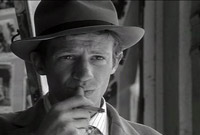 One of the first shots fired in a worldwide cinematic revolution dubbed the French New Wave, Jean-Luc Godard's breakthrough film brought a different kind of filmmaking, and a different kind of Paris, to the world. This jovially artsy homage to American "poverty row" crime thrillers brings us none other than ultimate ‘60s cool cat Jean-Paul Belmondo as a Humphrey Bogart-worshiping cop killer on the run who, instead of fleeing the gendarmes like any smart crook, shacks up with a pretty American writer (Jean Seberg) and engages in lengthy pillow talk about love and sex, American authors, and other matters he really shouldn't have much time for. Introducing the now ubiquitous deliberate jump-cut to world cinema, "Breathless" was shot by the great Raoul Coutard using a handheld camera and with little artificial light. The result is something of a visual marvel as those familiar streets of Paris, even the ones where you can see those visual clichés, the Eiffel Tower and the Arche de Triomphe, is at last revealed not as a fairyland for American tourists, but a real place where people actually live. The shocking thing is that it's even more beautiful than before.
One of the first shots fired in a worldwide cinematic revolution dubbed the French New Wave, Jean-Luc Godard's breakthrough film brought a different kind of filmmaking, and a different kind of Paris, to the world. This jovially artsy homage to American "poverty row" crime thrillers brings us none other than ultimate ‘60s cool cat Jean-Paul Belmondo as a Humphrey Bogart-worshiping cop killer on the run who, instead of fleeing the gendarmes like any smart crook, shacks up with a pretty American writer (Jean Seberg) and engages in lengthy pillow talk about love and sex, American authors, and other matters he really shouldn't have much time for. Introducing the now ubiquitous deliberate jump-cut to world cinema, "Breathless" was shot by the great Raoul Coutard using a handheld camera and with little artificial light. The result is something of a visual marvel as those familiar streets of Paris, even the ones where you can see those visual clichés, the Eiffel Tower and the Arche de Triomphe, is at last revealed not as a fairyland for American tourists, but a real place where people actually live. The shocking thing is that it's even more beautiful than before.
 "Charade" (1963)
"Charade" (1963)
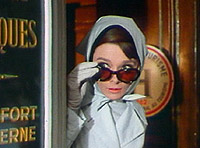 This delightful, quasi-Hitchcockian black comedy-thriller was the perfect excuse for Audrey Hepburn to make a return trip to Paris to re-team with Paris-friendly directorial great Stanley Donen, and to cinematically pursue the ultimate leading man, Cary Grant. Written by the extremely witty Peter Stone ("The Taking of Pelham One Two Three"), "Charade" takes special pleasure in its use of such familiar locales as the River Seine and less familiar spots, including a Punch & Judy show at the Theatre Vrai Guignolet and a rooftop fight atop the American Express building. Indeed, the film is highly self-aware about its status as an American film set in Paris. Hepburn casually mentions such past Paris-set movies as "An American in Paris" and notes "The Hunchback of Notre Dame" as she and Grant pass the famed cathedral. Perhaps largely because of Grant's well-known discomfort at romancing a much younger woman, "Charade" is relatively prim and refreshingly free of leering, which actually makes it far sexier and funnier than most ‘60s romantic comedies. Grant could not have asked for a more fitting finale to his career as a romantic lead or a better city in which to film it.
This delightful, quasi-Hitchcockian black comedy-thriller was the perfect excuse for Audrey Hepburn to make a return trip to Paris to re-team with Paris-friendly directorial great Stanley Donen, and to cinematically pursue the ultimate leading man, Cary Grant. Written by the extremely witty Peter Stone ("The Taking of Pelham One Two Three"), "Charade" takes special pleasure in its use of such familiar locales as the River Seine and less familiar spots, including a Punch & Judy show at the Theatre Vrai Guignolet and a rooftop fight atop the American Express building. Indeed, the film is highly self-aware about its status as an American film set in Paris. Hepburn casually mentions such past Paris-set movies as "An American in Paris" and notes "The Hunchback of Notre Dame" as she and Grant pass the famed cathedral. Perhaps largely because of Grant's well-known discomfort at romancing a much younger woman, "Charade" is relatively prim and refreshingly free of leering, which actually makes it far sexier and funnier than most ‘60s romantic comedies. Grant could not have asked for a more fitting finale to his career as a romantic lead or a better city in which to film it.
 "Last Tango in Paris" (1972)
"Last Tango in Paris" (1972)
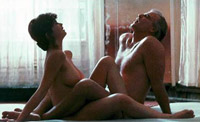 It's difficult now to realize the impact this kinky, sad little movie by poet-turned-director Bernardo Bertolucci had on culture, life, the universe and everything back in ‘73. New Yorker critic Pauline Kael called it "the most powerfully erotic movie ever made," while conservatives attacked it and wags sniggered at Marlon Brando's borderline abusive use of a stick of butter on Maria Schneider. Today, we can see it more easily for what it is: a psychodrama about a middle-aged American expat (Brando) whose unfaithful wife has just committed suicide, who tries to dull the pain by starting an anonymous, sex-only relationship with a beautiful 20-year-old (Schneider) in an empty apartment. Still, the matter of the film's setting is no random occurrence. For better or worse, Paris and the swooning music of jazz composer Gato Barbieri permeate the entire film, providing a tragic, even romantic, underpinning for the film's deliberately sordid affair between two members of different lost generations. As photographed by the amazing Vittorio Storaro, Paris becomes the third partner in the film's almost-love affair, and locations as diverse as dance halls and back alleys seem to mirror the distorted moods of the film's distraught, creepy characters.
It's difficult now to realize the impact this kinky, sad little movie by poet-turned-director Bernardo Bertolucci had on culture, life, the universe and everything back in ‘73. New Yorker critic Pauline Kael called it "the most powerfully erotic movie ever made," while conservatives attacked it and wags sniggered at Marlon Brando's borderline abusive use of a stick of butter on Maria Schneider. Today, we can see it more easily for what it is: a psychodrama about a middle-aged American expat (Brando) whose unfaithful wife has just committed suicide, who tries to dull the pain by starting an anonymous, sex-only relationship with a beautiful 20-year-old (Schneider) in an empty apartment. Still, the matter of the film's setting is no random occurrence. For better or worse, Paris and the swooning music of jazz composer Gato Barbieri permeate the entire film, providing a tragic, even romantic, underpinning for the film's deliberately sordid affair between two members of different lost generations. As photographed by the amazing Vittorio Storaro, Paris becomes the third partner in the film's almost-love affair, and locations as diverse as dance halls and back alleys seem to mirror the distorted moods of the film's distraught, creepy characters.
 "Day of the Jackal" (1973)
"Day of the Jackal" (1973)
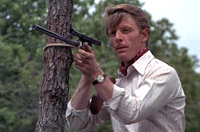 You don't get much further from the storybook Paris of classic-era Hollywood than Fred Zinneman's stripped-down film version of Frederick Forsyth's suspense thriller about a cold-blooded assassin (Edward Fox) hired by a far-right paramilitary organization to assassinate President Charles de Gaulle in 1963. As a dogged Parisian detective (Michael Lonsdale) tries his best to learn the assassin's whereabouts, identity, and methods, the film's setting shifts between numerous European locales, until the final 20 minutes when the killer, codenamed Jackal, heads to Paris determined to murder de Gaulle during a public commemoration. The tense but low-key finale was shot during a real parade, in which visitors mistook the actor playing the two-years dead de Gaulle for the real-life French nationalist hero. The familiar buildings around 150 Rue des Rennes make a surprisingly matter-of-fact backdrop as Zinneman keeps our attention on the detective's desperate efforts to thwart the killing. The entire matter is resolved within a few deadly moments in an elderly woman's nondescript apartment. It's not that the Paris of "Day of the Jackal" isn't as beautiful as it appears in other films, it's that the city's beauty is utterly beside the point.
You don't get much further from the storybook Paris of classic-era Hollywood than Fred Zinneman's stripped-down film version of Frederick Forsyth's suspense thriller about a cold-blooded assassin (Edward Fox) hired by a far-right paramilitary organization to assassinate President Charles de Gaulle in 1963. As a dogged Parisian detective (Michael Lonsdale) tries his best to learn the assassin's whereabouts, identity, and methods, the film's setting shifts between numerous European locales, until the final 20 minutes when the killer, codenamed Jackal, heads to Paris determined to murder de Gaulle during a public commemoration. The tense but low-key finale was shot during a real parade, in which visitors mistook the actor playing the two-years dead de Gaulle for the real-life French nationalist hero. The familiar buildings around 150 Rue des Rennes make a surprisingly matter-of-fact backdrop as Zinneman keeps our attention on the detective's desperate efforts to thwart the killing. The entire matter is resolved within a few deadly moments in an elderly woman's nondescript apartment. It's not that the Paris of "Day of the Jackal" isn't as beautiful as it appears in other films, it's that the city's beauty is utterly beside the point.
 "Round Midnight" (1986)
"Round Midnight" (1986)
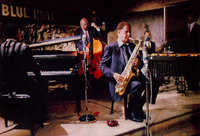 The French love affair with American jazz is portrayed joyously in this poignant, semi-fact-based period film about a Parisian music buff and single father (François Cluzet) who becomes a much needed friend to a substance-addicted African-American jazz man, played by real-life saxophonist Dexter Gordon, making his Oscar-nominated acting debut. Director Bertrand Tavernier 's touching recreation of the jazz scene of ‘50s Paris is beautifully detailed thanks to help from collaborators like musician Herbie Hancock and Alexandre Trauner – the French-Jewish production designer who, more than 40 years prior, recreated 1820s Paris in secret on "Children of Paradise." Even having seen many French and American films shot in the real Paris of the 1950s, there's something about the look of "'Round Midnight" that is even more captivating. It's not nostalgia, exactly, but something deeper, stronger and lot more moving. As loose and playful as a great sax solo, the film understands that the setting for this kind of character driven "hangout" film is as important as any other aspect. The feeling of an American-influenced Parisian demimonde has rarely been stronger than in this lovely, under-recognized gem.
The French love affair with American jazz is portrayed joyously in this poignant, semi-fact-based period film about a Parisian music buff and single father (François Cluzet) who becomes a much needed friend to a substance-addicted African-American jazz man, played by real-life saxophonist Dexter Gordon, making his Oscar-nominated acting debut. Director Bertrand Tavernier 's touching recreation of the jazz scene of ‘50s Paris is beautifully detailed thanks to help from collaborators like musician Herbie Hancock and Alexandre Trauner – the French-Jewish production designer who, more than 40 years prior, recreated 1820s Paris in secret on "Children of Paradise." Even having seen many French and American films shot in the real Paris of the 1950s, there's something about the look of "'Round Midnight" that is even more captivating. It's not nostalgia, exactly, but something deeper, stronger and lot more moving. As loose and playful as a great sax solo, the film understands that the setting for this kind of character driven "hangout" film is as important as any other aspect. The feeling of an American-influenced Parisian demimonde has rarely been stronger than in this lovely, under-recognized gem.
 "Ronin" (1998)
"Ronin" (1998)
 John Frankenheimer's late ‘90s action-thriller doesn't offer the most flattering view of Paris, but in keeping with the story of a group of mercenaries (led by Robert De Niro) hired to retrieve a mysterious case, it shows a darker, grittier side to the city that we're not used to seeing. Dirty alleyways and rusted warehouses make up a majority of the locations in the first 30 minutes of the film, though we do get a fleeting shot of the Eiffel Tower in the background just to ensure that we really are in Paris. After a brief detour down south to the Mediterranean coast in Nice, the action returns to the City of Love for an action-packed finale that begins with an adrenaline-charged car chase through the crowded streets of Paris and ends with a shootout at the famous Le Zenith concert hall. It's definitely not the first film you'd show a potential tourist, but even when "Ronin" is busy creating total chaos, the grace and beauty of the city bleeds through.
John Frankenheimer's late ‘90s action-thriller doesn't offer the most flattering view of Paris, but in keeping with the story of a group of mercenaries (led by Robert De Niro) hired to retrieve a mysterious case, it shows a darker, grittier side to the city that we're not used to seeing. Dirty alleyways and rusted warehouses make up a majority of the locations in the first 30 minutes of the film, though we do get a fleeting shot of the Eiffel Tower in the background just to ensure that we really are in Paris. After a brief detour down south to the Mediterranean coast in Nice, the action returns to the City of Love for an action-packed finale that begins with an adrenaline-charged car chase through the crowded streets of Paris and ends with a shootout at the famous Le Zenith concert hall. It's definitely not the first film you'd show a potential tourist, but even when "Ronin" is busy creating total chaos, the grace and beauty of the city bleeds through.
 "Amelie" (2001)
"Amelie" (2001)
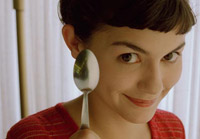 For a film that's perhaps best known for the international travels of a sneaky garden gnome, "Amelie" still very much lives and breathes Paris. Director Jean-Pierre Jeunet refrained from getting too touristy during filming of the movie in Montmartre (though he does sneak in the Notre Dame Cathedral during a flashback sequence where Amelie's mother is killed by a woman who jumps off the tower), but for the most part, the city is just an extension of Amelie's vivid imagination. Shot like a surrealistic fantasy with bright candy colors and an omnipresent heavenly glow, "Amelie" presents the kind of idyllic version of contemporary France that you'd expect to find on a postcard. Still, for as little of Paris that we get to see, the movie uses the film's main setting – The Two Windmills café where the title character works as a waitress when she's not busy interfering with other people's lives – as a stand-in for the city. Charming, whimsical, and filled to the brim with lively characters, Jeunet's Paris is like a dream made real.
For a film that's perhaps best known for the international travels of a sneaky garden gnome, "Amelie" still very much lives and breathes Paris. Director Jean-Pierre Jeunet refrained from getting too touristy during filming of the movie in Montmartre (though he does sneak in the Notre Dame Cathedral during a flashback sequence where Amelie's mother is killed by a woman who jumps off the tower), but for the most part, the city is just an extension of Amelie's vivid imagination. Shot like a surrealistic fantasy with bright candy colors and an omnipresent heavenly glow, "Amelie" presents the kind of idyllic version of contemporary France that you'd expect to find on a postcard. Still, for as little of Paris that we get to see, the movie uses the film's main setting – The Two Windmills café where the title character works as a waitress when she's not busy interfering with other people's lives – as a stand-in for the city. Charming, whimsical, and filled to the brim with lively characters, Jeunet's Paris is like a dream made real.
 "Moulin Rouge" (2001)
"Moulin Rouge" (2001)
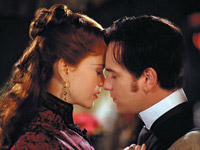 Poor doesn't get much cooler than the bohemian theater troop in Baz Luhrmann's Bollytastic 2001 musical tragedy. Set in the artsy Monmartre section of Paris, the city's architecture does not play a significant role in the movie – save, perhaps, the infamous pop song medley scene on top of the giant elephant – but its spirit permeates every frame. Indeed, the lead character, an aspiring writer named Christian (Ewan McGregor), moves from his native England to Paris in order to capture the essence of the times, only to fall in love with a beautiful but ill courtesan (Nicole Kidman) who has been betrothed to a rich duke (Richard Roxburgh) in exchange for the financing of the Moulin Rouge's latest show. There is very little about "Moulin Rouge" that screams 1900, but that wasn't really Luhrmann's intention; he needed a time and a place that exuded passion (and absinthe), and early 20th century Paris was a perfect fit.
Poor doesn't get much cooler than the bohemian theater troop in Baz Luhrmann's Bollytastic 2001 musical tragedy. Set in the artsy Monmartre section of Paris, the city's architecture does not play a significant role in the movie – save, perhaps, the infamous pop song medley scene on top of the giant elephant – but its spirit permeates every frame. Indeed, the lead character, an aspiring writer named Christian (Ewan McGregor), moves from his native England to Paris in order to capture the essence of the times, only to fall in love with a beautiful but ill courtesan (Nicole Kidman) who has been betrothed to a rich duke (Richard Roxburgh) in exchange for the financing of the Moulin Rouge's latest show. There is very little about "Moulin Rouge" that screams 1900, but that wasn't really Luhrmann's intention; he needed a time and a place that exuded passion (and absinthe), and early 20th century Paris was a perfect fit.
 "The Dreamers" (2003)
"The Dreamers" (2003)
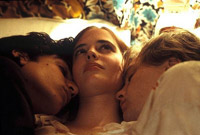 Only in Paris, and only in 1968, would the attempted firing of a film program curator named Henri Langlois spark a riot. It's in the midst of that riot that a relatively straitlaced young cinephile from San Diego (Michael Pitt) becomes instant best pals and more with an impossibly sexy film lover (Eva Green) and her beloved, similarly cinema-mad twin brother (Louis Garrel) in this return to Paris and squirmy sexuality for director Bernardo Bertolucci. As he points out in a Bullz-Eye interview, the sexuality here is vastly more upbeat than in "Last Tango in Paris," and the NC-17 rated film is a great deal hotter and more engaging. Indeed, Paris seeps into every frame of "The Dreamers" – even though the majority of the film is restricted to the large apartment where the three friends wrap themselves in an emotional, sexual, cinematic and political cocoon. Of course, they'll eventually have to break free to join the real Paris and the tides of real world history as the May ‘68 uprisings begin. In the meantime, however, the atmosphere the three create among themselves is as heady as the smell of hashish on a Parisian back alley.
Only in Paris, and only in 1968, would the attempted firing of a film program curator named Henri Langlois spark a riot. It's in the midst of that riot that a relatively straitlaced young cinephile from San Diego (Michael Pitt) becomes instant best pals and more with an impossibly sexy film lover (Eva Green) and her beloved, similarly cinema-mad twin brother (Louis Garrel) in this return to Paris and squirmy sexuality for director Bernardo Bertolucci. As he points out in a Bullz-Eye interview, the sexuality here is vastly more upbeat than in "Last Tango in Paris," and the NC-17 rated film is a great deal hotter and more engaging. Indeed, Paris seeps into every frame of "The Dreamers" – even though the majority of the film is restricted to the large apartment where the three friends wrap themselves in an emotional, sexual, cinematic and political cocoon. Of course, they'll eventually have to break free to join the real Paris and the tides of real world history as the May ‘68 uprisings begin. In the meantime, however, the atmosphere the three create among themselves is as heady as the smell of hashish on a Parisian back alley.
 "Ratatouille" (2007)
"Ratatouille" (2007)
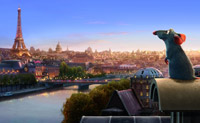 There's a rat in me kitchen, what are we gonna do? Give it a spoon, that's what. Pixar's delightful tale of Remy, a misfit rat in the French countryside who dreams of being a cook (why he and his relatives all have American accents remains a mystery), is still their most grown-up effort to date. Remy is grief-stricken when a trip into the sewers to escape a gun-toting woman separates him from his family, but when the spirit of Remy's idol, renowned chef Gusteau, lures Remy into coming out of the sewer to look where he's landed, Brad Bird gives us one of the most beautiful panoramic views of Paris ever "shot." For the most part, though, the action takes place inside Gusteau's restaurant, now reduced to a three-star establishment following the death of its namesake. Remy, though, soon changes their fortunes by teaming up with the talentless garbage boy Linguini to produce brand new and highly in-demand dishes, even impressing soulless food critic Anton Ego (a pitch-perfect Peter O'Toole). It is to Pixar's great credit that they can set a movie in one of the world's most beautiful cities and not have the viewer longing for the scenery.
There's a rat in me kitchen, what are we gonna do? Give it a spoon, that's what. Pixar's delightful tale of Remy, a misfit rat in the French countryside who dreams of being a cook (why he and his relatives all have American accents remains a mystery), is still their most grown-up effort to date. Remy is grief-stricken when a trip into the sewers to escape a gun-toting woman separates him from his family, but when the spirit of Remy's idol, renowned chef Gusteau, lures Remy into coming out of the sewer to look where he's landed, Brad Bird gives us one of the most beautiful panoramic views of Paris ever "shot." For the most part, though, the action takes place inside Gusteau's restaurant, now reduced to a three-star establishment following the death of its namesake. Remy, though, soon changes their fortunes by teaming up with the talentless garbage boy Linguini to produce brand new and highly in-demand dishes, even impressing soulless food critic Anton Ego (a pitch-perfect Peter O'Toole). It is to Pixar's great credit that they can set a movie in one of the world's most beautiful cities and not have the viewer longing for the scenery.
You can follow us on Twitter and Facebook for content updates. Also, sign up for our email list for weekly updates and check us out on Google+ as well.











